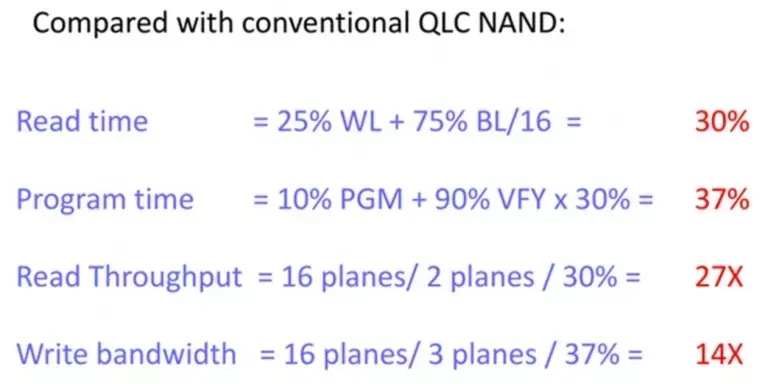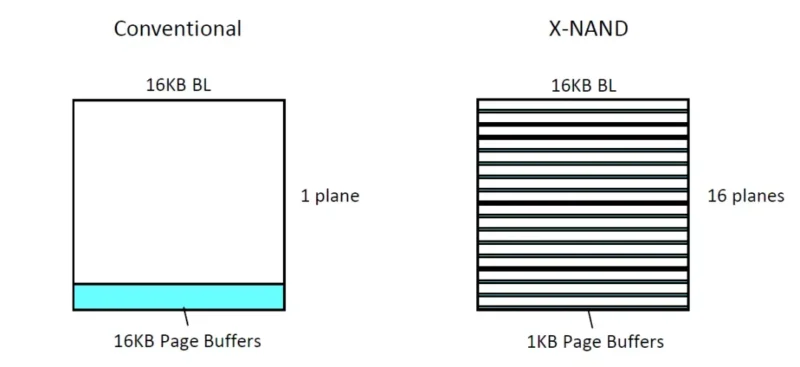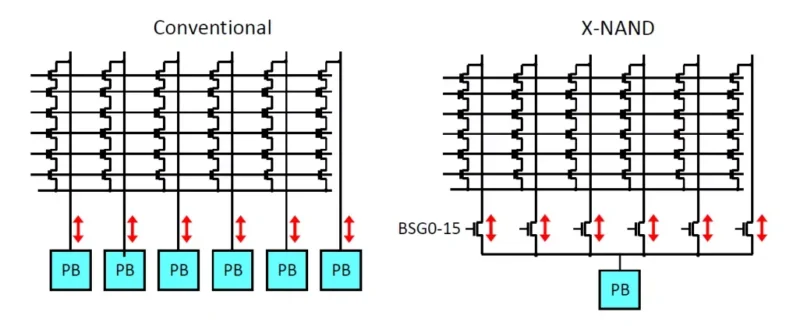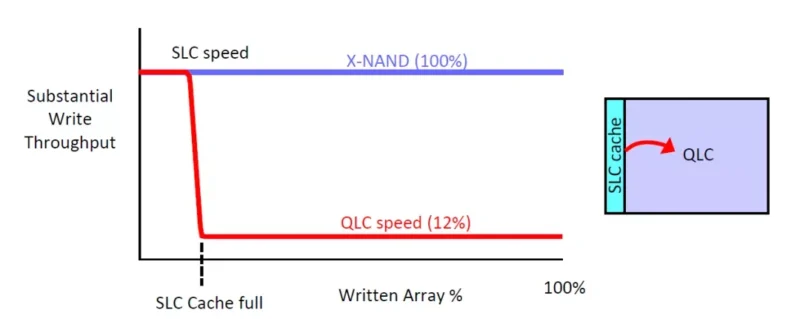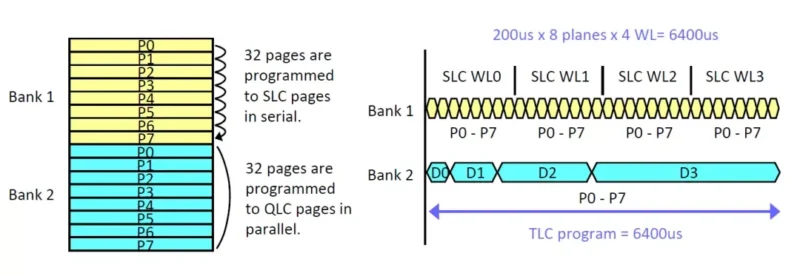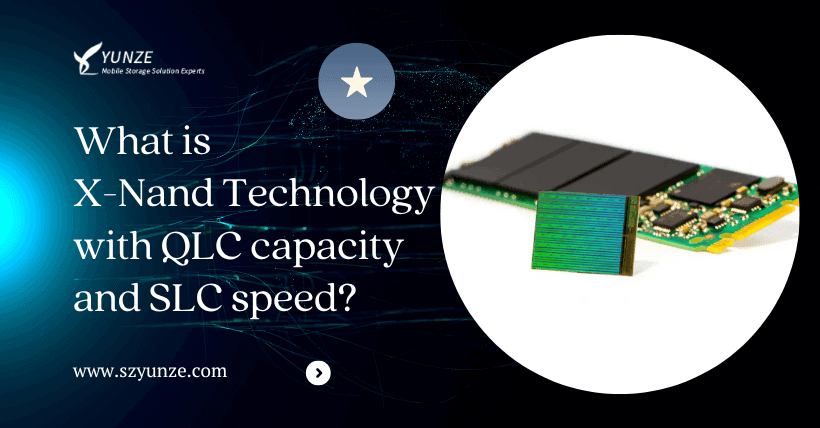
Those who pay attention to solid-state drives know that there are four types of particles in solid-state drives: SLC, MLC, TLC, and QLC. The difference between them is that the density is increasing, the price is becoming cheaper, but correspondingly, the lifespan is getting shorter, and the read and write speed is getting slower. Nowadays, consumer-grade solid-state drives are still mainly TLC, but with the growing demand for data storage and sensitivity to price, storage manufacturers are gradually introducing QLC solid-state drives that have larger capacity and lower price.
However, slow speed is a weakness of QLC. But, is it possible to combine the advantages of large QLC capacity, low price, and fast SLC read/write speed? The answer is yes. X-NAND flash architecture, which aims to combine the speed of SLC flash with the density and low price of QLC.
Regarding this technology, many people might think it’s just SLC Cache technology, right? But after understanding it, there are indeed some new elements. Let’s take a closer look.
Firstly, the highlight of this technology lies in its 3x faster random read and write performance compared to QLC flash, and an impressive 27x/14x increase in sequential read and write workloads respectively. The chip size is also smaller, occupying only 37% of a 16-plane design, allowing for flexible sizing to achieve desired speeds. Additionally, this technology doesn’t require new manufacturing processes and can be integrated into existing flash manufacturing equipment.
Enhancing data read and write concurrency is a crucial direction for improving flash memory performance. Increasing the number of planes significantly enhances flash concurrency, and one of the reasons for the high performance of X-NAND technology is the increased number of planes. However, the challenge lies in the rarity of 16-plane flash, as most flash memory utilizes only 2 planes. Currently, XL-NAND from Kaira is likely the only option with 16-plane flash.
Nevertheless, achieving a widespread application of 16-plane design in 3D flash memory isn’t economically viable. This is because the number of Page Buffers would also increase in tandem, leading to a sharp rise in the chip’s overall size and consequently driving up manufacturing costs. X-NAND tackles this issue by altering the design of NAND flash, reducing the capacity of Page Buffers to minimize the area occupied by multi-plane flash.
According to Internet sources, X-NAND incorporates a device between each plane and Page Buffer (PB), thereby reducing the PB capacity to 1KB. This is the key factor behind achieving a smaller chip size with X-NAND, enabling each flash die to accommodate 16 or even 64 planes without a significant cost increase. Moreover, X-NAND technology can also be applied to SLC flash, promising even faster speeds for SLC flash memory than what is currently available.
Additionally, as we are aware, solid-state drives (SSDs) employing the SLC Cache strategy often experience a significant drop in speed once the cache is exhausted. Does X-NAND technology also face a similar concern? According to information from online resources, X-NAND technology ensures that QLC flash maintains its read and write speed consistently, akin to SLC cache, thereby preventing the occurrence of a speed decline when the cache is depleted.
Furthermore, according to relevant online sources, the underlying principle has been explained. X-NAND fully leverages the benefits of increased plane count, enabling different groups of flash memory to alternate in a cyclic manner among three modes: SLC writing, QLC releasing, and flash erasing.
According to data from the semiconductor industry, continuous writing of 32 pages to 8 planes takes approximately 6400μs, and the time required to read this data and concurrently write it to QLC pages is also around 6400μs. This back-and-forth process ensures that data can be consistently written at full speed without experiencing slowdowns.
It’s important to note that X-NAND technology can elevate QLC flash performance to SLC levels but does not extend the lifespan of QLC. However, viewed from another perspective, for most individuals, their daily HDD write volume does not exceed 50GB. Based on this calculation, using a QLC drive for 10 years isn’t a significant concern. Moreover, for many, performance takes higher priority over write lifespan.
In the long run, combining the advantages of QLC and SLC through X-NAND holds practical significance for both the storage industry and consumers. Regrettably, over a year since its introduction, no solid-state drive products utilizing X-NAND technology have emerged in the market.
Related:
1. This article is compiled from online sources. If there is any infringement, please contact us for removal.
2. The published content represents the views of the author and not the position of Yunze.



